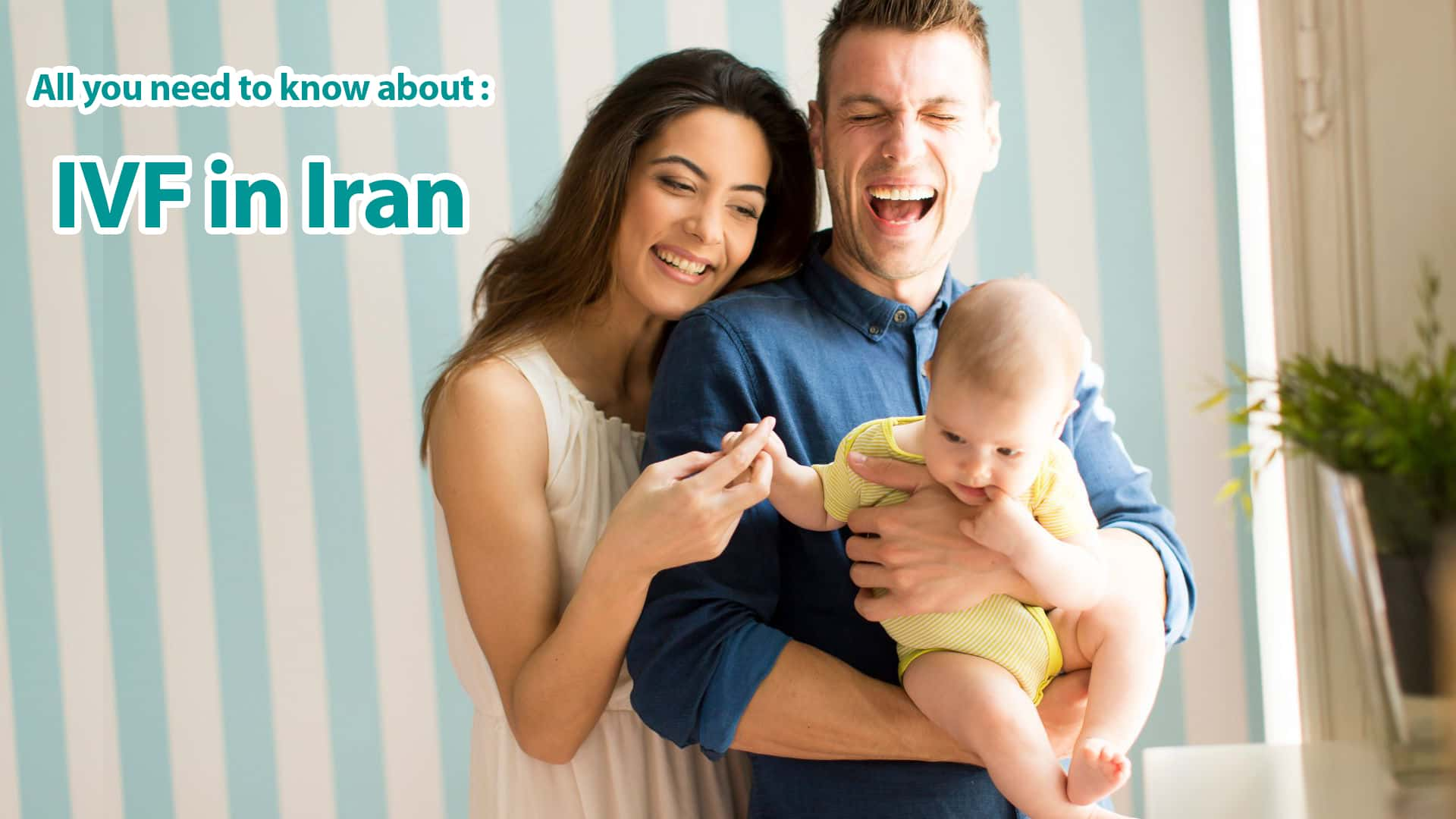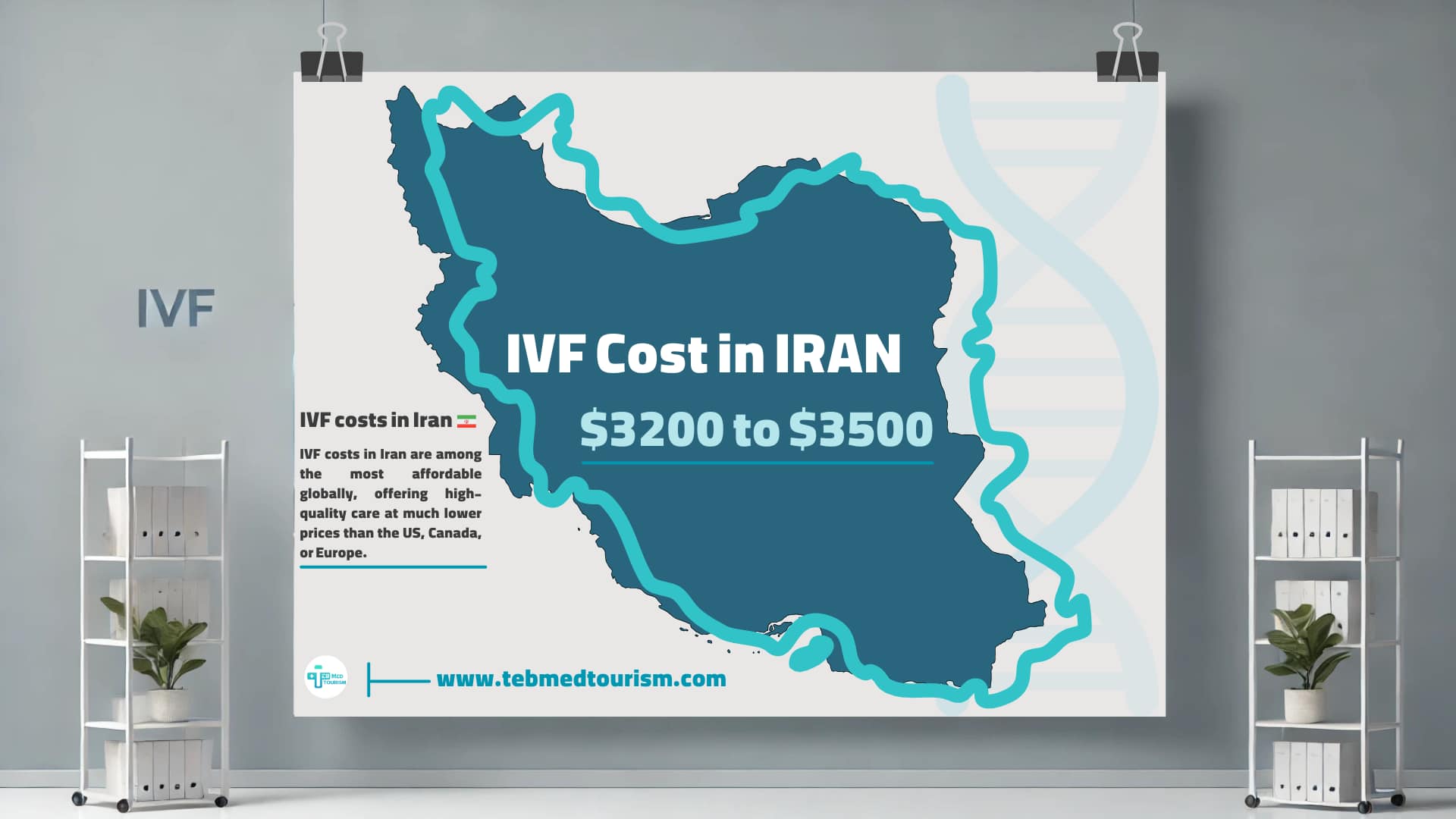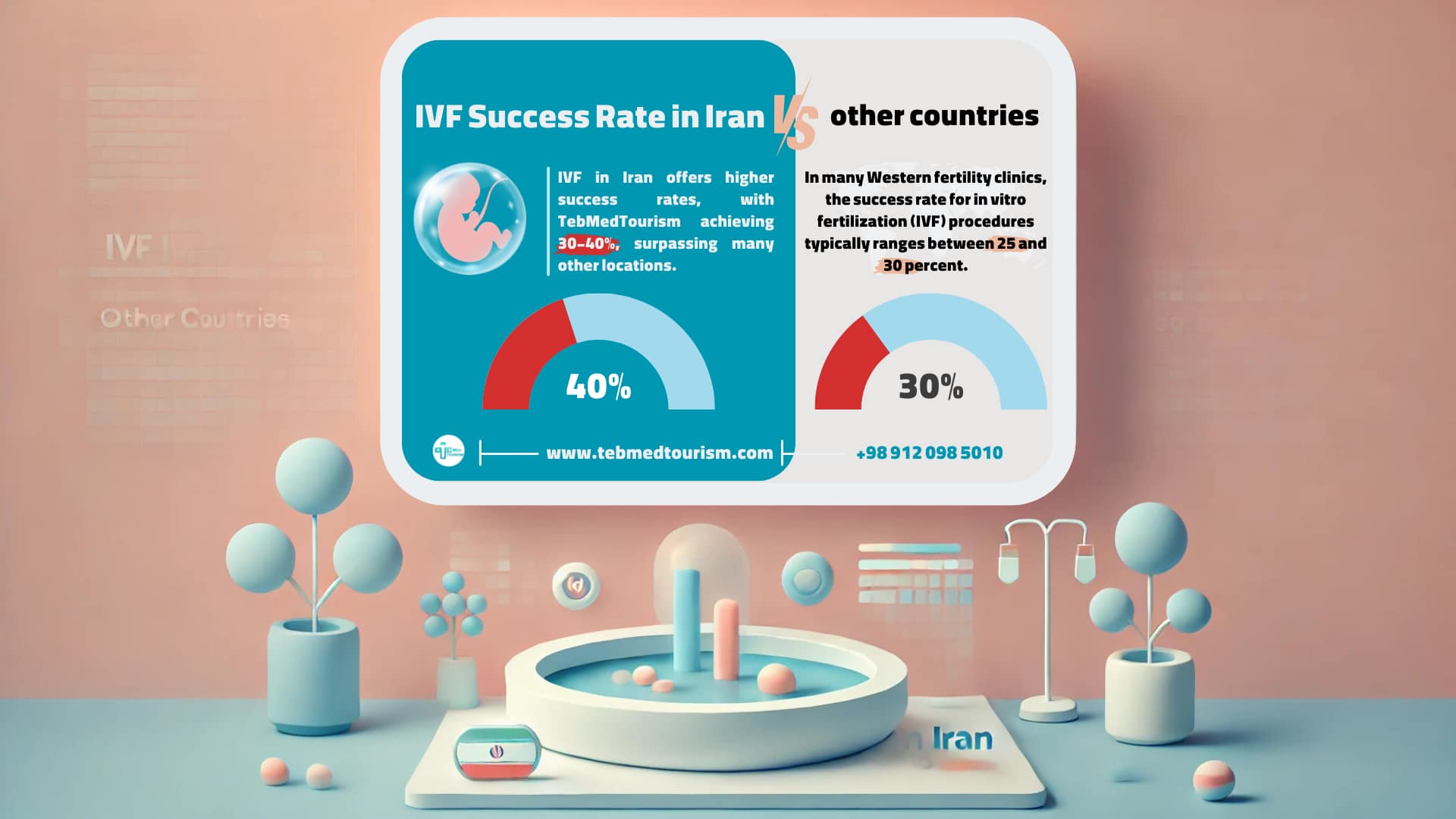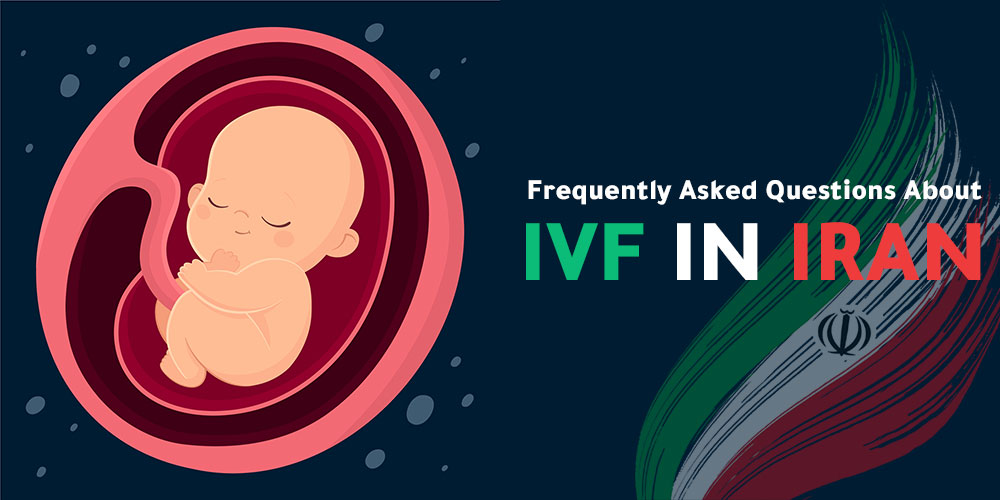
IVF in Iran has many benefits that make it a great choice for couples looking for fertility treatment.
Not only is IVF supported by law, but it also has religious backing, which is something you don’t find in many countries. This makes the process smoother and more reliable for couples, as they can trust that the treatment is fully backed.
You might find IVF in other countries at a lower price, but the quality of treatment may not be as high as in Iran. When you compare the cost to the quality of care, Iran stands out as one of the best options. The success rate is also high, which means you get great value for the price.
Many couples need more than just IVF. They may also need services like egg donation, gender selection, stem cell therapy, TESE, PGS/NGS, PRP, Polypectomy, Myomectomy, or even surrogacy. Iran offers all these services, which means you can get everything you need in one place.
Many women prefer to have a female doctor for their fertility treatments, and in Iran, many skilled and professional fertility specialists are women, so couples can feel comfortable knowing they’re in good hands.
All these factors make Iran a great choice for IVF and fertility treatments. It’s a country where you can find high-quality care at affordable prices, along with all the additional services you might need.

The cost of IVF in Iran is one of the most affordable in the world compared to many other countries. While prices can change depending on the clinic and treatment, Iran offers high-quality care at much lower prices than places like the US, Canada, or Europe.
This is mainly because the Iranian currency is not as strong, which makes medical services much cheaper for patients coming from other countries.
On average, the cost of IVF in Iran covers everything you need, including your first consultation, tests, the IVF procedure itself, and the necessary medications—all at a much lower price than you might pay elsewhere.
Even though the cost is lower, the treatment quality is still excellent. Many clinics in Iran use the latest technology, and most doctors are highly trained, with international experience.
At TebMedTourism, we take it a step further. We offer the best prices without lowering the quality of care. For just $3200 to $3500, you'll get top-quality fertility services, expert specialists, and access to advanced treatments.
We also offer different packages to suit your specific needs, such as egg donation, sperm donation, gender selection, and more. Just send us a message, and we'll share the details of our packages, including the services and prices that fit your needs.
To illustrate the cost difference, we have compiled a table showing the average cost of IVF in various countries compared to the cost of IVF treatment in Iran:
| Country | Average Cost of IVF | Cost Difference Compared to Iran |
| Poland | $6,332 | +135% |
| Turkey | $5,880 | +110% |
| Czech | $6,900 | +145% |
| India | $6,160 | +120% |
| Russia | $7,380 | +165% |
| Ukraine | $7,380 | +165% |
| Cyprus | $7,380 | +165% |
| Greece | $8,000 | +185% |
| Latvia | $8,540 | +210% |
| Spain | $9,380 | +235% |
| Malaysia | $12,800 | +355% |
| UK | $11,900 | +325% |
| Italy | $11,800 | +335% |
| UAE | $8,600 | +210% |
| Singapore | $8,900 | +215% |
| Australia | $14,000 | +560% |
| USA | $25,500 | +810% |
As shown in the table, the average cost of IVF in many other countries is much higher compared to the cost of IVF in Iran. As a result of the recent devaluation of Iran's currency, high-quality medical services are now more affordable. Iran's medical science has a strong global ranking, particularly in the field of infertility treatments. The cost of an entire IVF cycle in Iran is very reasonable, with an average cost of $3500. This price covers a range of services including doctor consultations, the IVF cycle itself, embryo transfer, necessary medications, ultrasounds, and required tests.
The success of IVF in Iran depends on many factors, including the quality of the eggs and sperm, the age of the woman, hormone levels, and overall health. These factors can affect how well IVF treatment works and the chances of success.
In many Western fertility clinics, the IVF success rate is around 25 to 30 percent. However, IVF in Iran offers some advantages that can help improve success rates. At TebMedTourism, we've seen success rates increase to 30 to 40 percent, which is higher than many other places.
This improvement is possible because IVF treatment in Iran benefits from skilled fertility specialists, advanced IVF techniques, and high-quality medical facilities. Our doctors take the time to understand each patient's unique needs, creating a personalized treatment plan that maximizes the chances of success.
Additionally, our clinics are equipped with the latest technology and offer additional services like egg donation, sperm donation, and genetic testing to further increase the likelihood of a successful pregnancy.

When it comes to IVF in Iran, some of the best clinics are Royan, Ebne Sina, and Madaran Clinic. These centers are known for their advanced treatments and high success rates. However, at TebMedTourism, we go the extra mile to ensure that our patients receive the best care at the clinics that best match their specific needs. We carefully assess each patient's situation and connect them with the right clinic, making sure they get personalized treatment for the best results.
Quick Information | |
|---|---|
Cost | 3500$ |
Anesthesia | General or local |
Duration of procedure | 3-4 weeks |
Hospital Stay | Zero day |
Minimum Stay in Iran | 3-4 weeks |
Iran is a leading destination for fertility treatments, with more than 100 highly skilled and experienced fertility specialists actively working in this field.
These experts are well-versed in a wide range of treatments, including IVF, egg donation, surrogacy, gender selection, and more. This means that no matter your specific situation or needs, you can find the right specialist to help you achieve your dream of parenthood.
At TebMedTourism, we take pride in connecting you with the best fertility doctors in Iran. Our team carefully evaluates your needs and matches you with a specialist who is best suited to your treatment plan.
Whether you require advanced procedures or just need guidance on your fertility journey, we ensure that you receive top-quality care at every step.
With Iran’s high success rates in fertility treatments and our dedicated support, you can feel confident about your decision to choose Iran for this important step in your life.

Below are personal stories from patients who chose IVF in Iran with the help of TebMedTourism.
"After many years of trying to have a baby, we chose IVF because we heard Iran has very good hospitals with high success rates. A friend recommended TebMedTourism, and they helped us find the best clinic in Iran. The doctors were very professional, and the prices were better than we expected. The technology used was advanced, and the whole experience was much better than what we could find in Iraq."
"My wife and I were struggling with infertility for a long time, so we decided to try IVF. We found TebMedTourism on social media, and they told us that Iran has the best technology and doctors. We chose Iran because of the high success rates and affordable prices. The doctors and staff were very kind and professional. We're happy with our decision and excited about the future."
"After many failed treatments here, we decided to try IVF in Iran. We found TebMedTourism through a Google search, and they gave us all the information we needed. They helped us choose the best clinic in Iran, where the doctors had a lot of experience. The technology was advanced, and the success rate was high. The prices were also much better than in Pakistan. We're now expecting a baby and are grateful for the help."
"We decided to try IVF after many years of trying to have a child. A colleague told me about Iran’s advanced IVF technology, so I looked up TebMedTourism online. They helped us choose the best clinic. The doctors were very experienced and explained everything clearly. The prices were very reasonable, and the success rate in Iran was much higher than in Kuwait. We're so happy we made this decision!"
"After unsuccessful IVF treatments in other countries, we decided to try Iran. We found TebMedTourism on Instagram, where they shared helpful information about IVF in Iran. We chose Iran because of the high success rates, advanced technology, and affordable prices. The doctors were very professional, and the care was excellent. We’re now waiting for our baby and thankful for the great service."
If you want to see more success stories, click here to explore more experiences with TebMedTourism.

To start IVF treatment in Iran, ensure your medical records are up-to-date (within the last 6 months). Next, choose a reputable clinic with skilled doctors and modern facilities—TebMedTourism can assist with this. After selecting a clinic, attend an initial consultation to review your records and create a personalized treatment plan. With affordable costs, high success rates, and strong legal support, Iran is an excellent choice for IVF.
The IVF process in Iran usually takes about 4 to 8 weeks, depending on your situation and treatment plan. It starts with consultations, fertility tests, and preparing the ovaries, followed by egg retrieval and embryo transfer. After the transfer, you’ll wait around two weeks to take a pregnancy test. The exact time may vary based on your health and the number of embryos being used. Clinics in Iran make the process smooth and well-organized to give you the best results.
To choose the best IVF center in Iran, focus on key factors such as the center's reputation, success rates, and the expertise of its doctors. Look for transparent pricing and ensure the center follows legal and ethical guidelines, especially for services like egg donation or surrogacy. Consider additional services like gender selection if needed, and ensure the staff is friendly, supportive, and communicative, with language assistance if required. Modern facilities and a comfortable environment are also important. TebMedTourism can help you select top clinics and navigate the process smoothly—contact us today for expert guidance!
The best IVF center in Iran should have experienced staff, advanced facilities, high success rates, personalized care, and transparent policies. TebMedTourism partners with top clinics like Royan, Taban, and Madaran, matching patients to the most suitable center based on their needs and schedule.
When searching for the best IVF surgeons in Iran, there are several factors to consider. The first step is to research the qualifications and experience of potential surgeons, including their education, training, and board certification. It's also important to consider the success rates of the clinics where they practice, as well as their patient reviews and testimonials. One of the best ways to find the best IVF doctors in Iran is by working with a reputable healthcare facilitator such as TebMedTourism. These facilitators have a network of trusted healthcare providers, including IVF specialists, and can help you find the right doctor based on your specific needs and preferences. TebMedTourism healthcare facilitator can help you navigate the complex process of seeking treatment abroad, including arranging appointments and consultations with IVF doctors, coordinating travel and accommodation, and providing other logistical support. By working with a healthcare facilitator, you can ensure that you receive the highest quality care from the top IVF experts in Iran, while also minimizing the stress and uncertainty of seeking treatment in a foreign country.
The success rate of IVF in Iran varies depending on the specific clinic and individual patient factors. However, the success rates for IVF in Iran are high, with some clinics reporting success rates of up to 50% per cycle. Other factors that may affect the success rate of IVF treatment in Iran include the age and health of the woman, the quality of the sperm and eggs used, and the number of embryos transferred. It is important for patients to consult with a reputable healthcare facilitator like TebMedTourism that is experienced in IVF treatment and collaborates with the fertility centers that own the highest success rates.
After IVF in Iran, the outcome can be a successful pregnancy or, in some cases, an unsuccessful cycle. If unsuccessful, couples may try another embryo transfer (if frozen embryos are available) or start a new IVF cycle with adjusted treatments. They might also explore options like donor eggs, embryos, surrogacy, or adoption, depending on their situation.

Comments & Questions